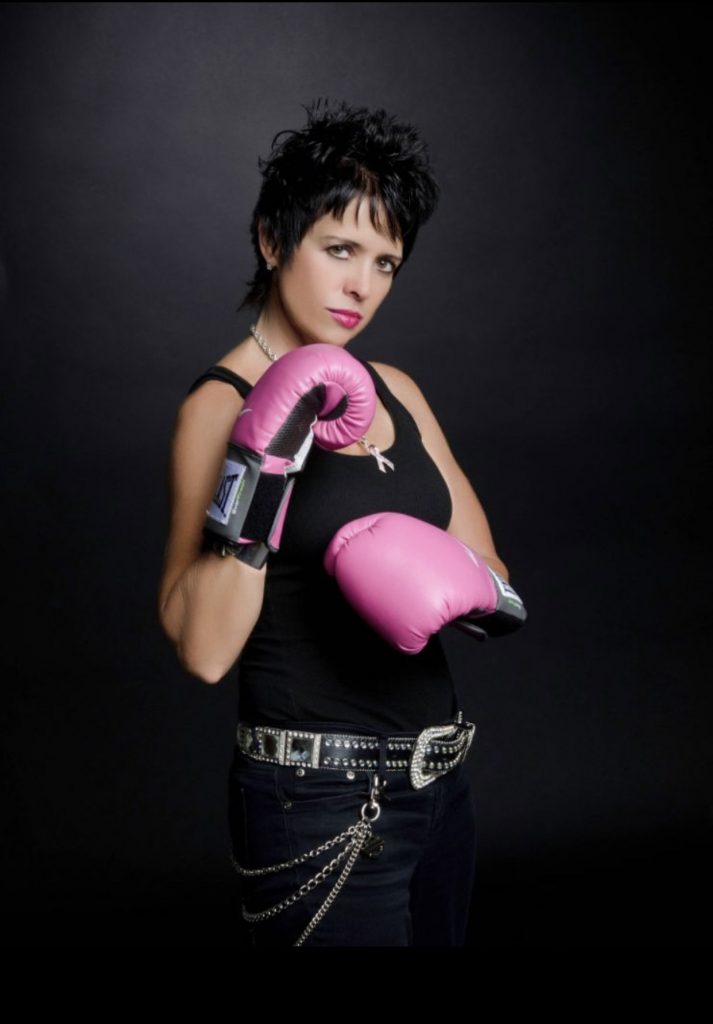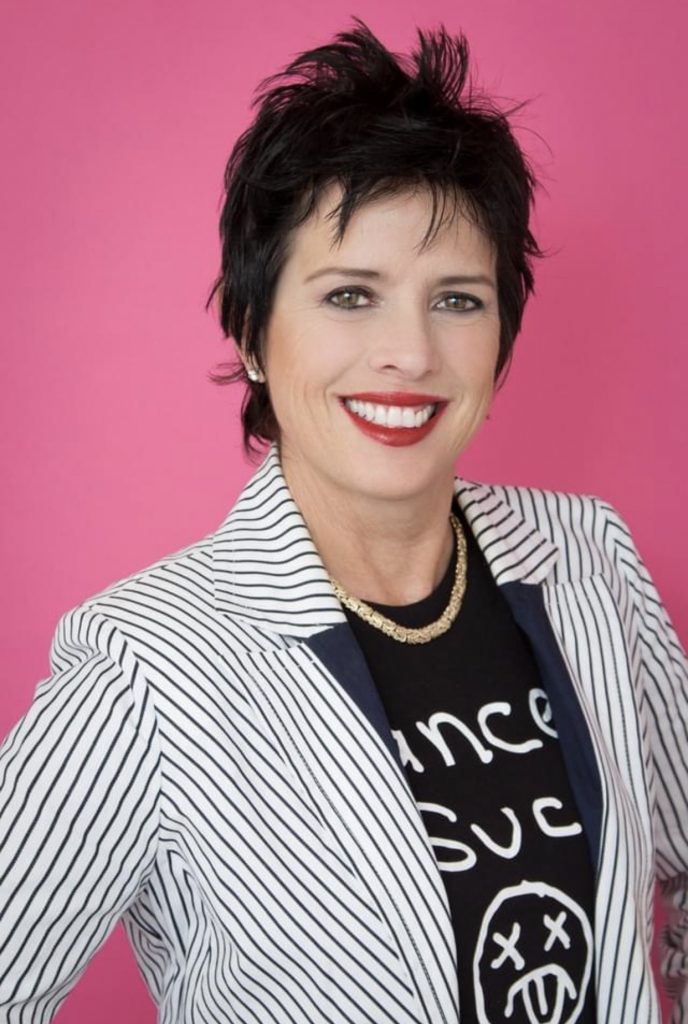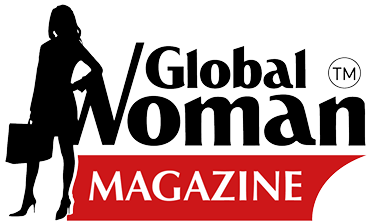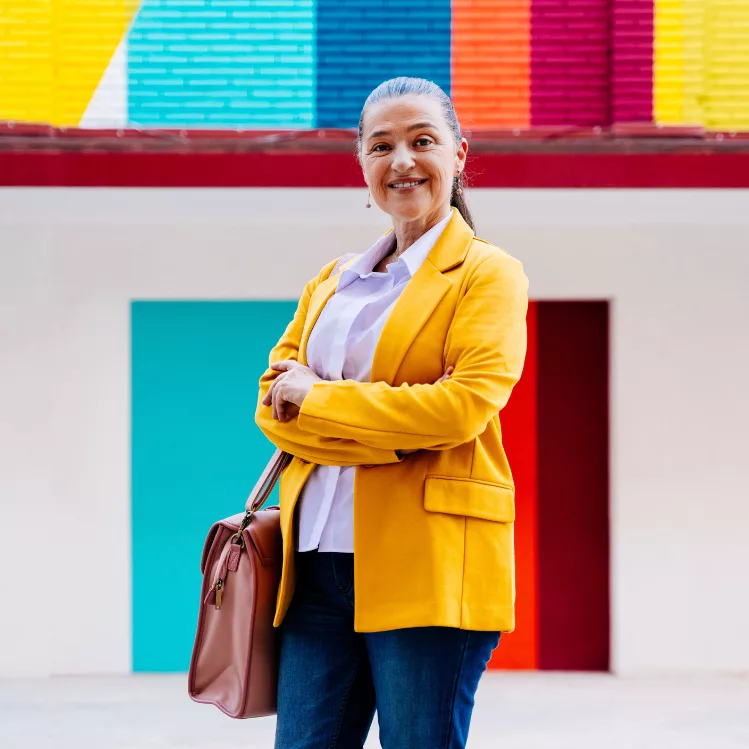
Cherie Mathews: Gentlemen, Please Judge Me on My Brain and Contribution and Not the Way I Pee
Stepping into the male-dominated industry of engineering, Cherie Mathews secured her place in a room full of innovators with the simple but intricate reverse engineering of an ordinary stapler. In a room full of engineers, she rolled up her sleeves and earned her place amongst the predominately male world of engineering. When diagnosed with breast cancer 20 years ago, Mathews was adamant to find the positive light in every negative situation, and with the help of reverse engineering, she created Heal In Comfort.
You’re a former IBMer in the field of Computer Engineering Technology and research and development. How did your career in engineering begin?
I began my career with IBM in Burlington VT, in a department that specialized in research and development and reverse engineering. Before I was accepted into this special department with the innovators, I was called into a large room for what appeared to be my final test to determine my position. I walked into the room clueless – I was handed a stapler and told I have one minute to reinvent or improve the function or design. Panic set in – I thought, how could I fix something that wasn’t broken? Wasting my precious minutes panicking, wasn’t going to yield an answer, so I asked myself what doesn’t work about this stapler? Then I remembered that the office managers use to complain that their hands would hurt from stapling papers and projects together all day! This was before email, and the stapler designs were the long skinny kind. So with my thirty seconds left of my one-minute challenge, I grabbed a coaster off of the table and put it on the top of the stapler to demonstrate my idea of increasing the surface area of the stapler to help relieve the pressure point on the hand. I looked around, and the faces looked shocked that a solution and demonstration came to me within that one minute. I received several claps and a new position in the most exciting research and development department on site. I was the only woman in the department, so I had a lot to prove back in the day.
I would add as much value, be a contributor, and be a team player every minute of the day. With that mindset and work ethic, I was eventually accepted and then fast-tracked into management which was an amazing experience.
What are some of the key lessons that you’ve taken from your career in engineering?
I was very young, so my learning curve was intense, and the biggest lesson learned was what Zig Zig taught us, and that was, “you can have everything in life you want if you just help other people get what they want.” I would encourage young people to read Bob Burg and John David Mann’s world-famous award-winning book The Go-Giver, a classic bestseller that brings to life the old proverb “give and you shall receive.”
I would love to share more about reverse engineering. I believe it is the key to learning fast and building your understanding from what has already been successfully done before. My work with IBM and reverse engineering involved deconstructing microchips and discovering failure points, as well as discovering what worked. After IBM, I used this skill in business. For instance, before I started my company Healincomfort, I reverse engineered why most small businesses fail, and I tried very hard not to fall into those potholes.
You started your career walking into rooms where you were the only woman and have excelled in a male-dominant field. How did it feel to be a woman in a male-dominant industry? What advice would you give to young girls who are hesitant to enter a predominately male industry?
Having been raised by my Dad, being around me did not intimidate me. However, fitting in as a trusted peer is another thing altogether. It felt like I was trying to fit into a fraternity, but you don’t look nor act like your bothers. I think everyone should watch the Hidden Figures movie because it is best demonstrates what it was like – I stood up several times and applauded in the middle of the movie. Those brilliant women of color are our true pioneers and open the doors and minds of others to accept a team member even if they don’t look like you. I remember a defining moment when I was presenting to a room of senior engineers and managers, they all looked like they would rather be doing anything else rather than listen to a 24-year-old. I got a little frustrated because my observations needed to be learnt and applied in the manufacturing process. So I stood in front of these men and said, ‘Gentlemen, I’m asking for only one thing, and that is, please judge me on my brain and contribution and not the way I pee.” The room burst out in laughter, and some of the gentlemen stood up and applauded. So sometimes you just have to stand up for yourself, but also be ready to put action behind your words, or you set all women back.
My advice for younger women wanting to enter male-dominated fields is not to step in with your hands on your hips demanding to be treated equally. Go in with your sleeves rolled up, ready to work hard, add value, and earn your right to be accepted. I have also witnessed men not being accepted in their field because they weren’t hard workers and contributors.

Your work always includes what you describe as ‘soul play’ – an aspect that encourages giving back to the community. What inspired you to develop the National School Program of the First Tee? What was the mission behind this initiative?
I went into teaching children after IBM because I believe it is a very noble cause and one that you can truly make a long-lasting difference in the lives of young people. My best friend Benna Cail and I were teaching one day, and she told me about a famous golfers’ children who were our students taking golf lessons. I replied that’s great, but why can’t golf be for all children, just look at what basketball, soccer, volleyball, and football have done for underserved children. Then she said, “I want to show you some modified golf equipment that is safe for children to learn with.” Those were the beginning steps of a life-changing idea to bring golf and its 9 Core Values to all children. After having a thousand doors slammed in our faces, we didn’t give up. We applied to one of the Core Values, and we made a breakthrough. Our test pilot was approved with 48 students, and we were ready to scale the concept to reach students all over the USA. It was a very long mission as 19 years of dedicating our minds and time to make it happen, but we did it! With The First Tee, everyone rolled up their sleeves, including our amazing trainers, and we reached 10 million public school children. It sure wasn’t about the money, but it sure was about Soul Pay and contributing to make the planet a better place.
You are a twenty-year cancer survivor and have once again shown the power of women. How was this period of your life? How did you tackle the ups and downs and maintain a positive mindset?
I am a God girl, so my faith held me together. The journey through breast cancer is quite an attack, not only on your body but also on your mind and soul. Nagging thoughts about survival flew in my mind like fiery darts, and I would have to pull them down and substitute the negative toxic thoughts with ones of life, health, and thoughts that included watching our beautiful children, Ashley and Adam, grow up. I love my babies, so when I was at a low point, I was determined to march through anything, and nothing was going to stop me from being their Mom. They call me Mamma Bear. My husband Adam is a three-time IronMan and was so supportive, and if he was nervous, he didn’t show it. He was my rock and still is. Whenever my spirit got a little shaky, I would take this negative energy and do something positive to help others to help push back and destroy the negative. My favorite scripture is I can do all things through Christ who strengthens me Philippians 4:13.
I love your use of the term ‘cancerpreneur’ – can you tell us more about how you took something negative in your life and turned it into a positive invention for everyone? What inspired you to launch Heal in Comfort?
I was diagnosed with breast cancer 20 years ago, a disease that has not been witnessed in my family DNA before. I was the athletic one – a long-distance runner – but I was the one diagnosed with breast cancer. It’s scary receiving this diagnosis, and it’s scary for your loved ones. I had to have a double mastectomy in my battle against breast cancer, and when I woke after surgery, the first thing I asked my amazing and supportive husband Adam was to hand me the red lipstick that I brought with me. I needed to feel a little normal because my body no longer looked normal nor remotely the same – I couldn’t even recognize it. However, as you can imagine, the lipstick only helped so much.
My frustration started when the nurse tried to get me dressed in what I had been instructed to bring – an old button-down dress shirt from my husband’s closet or something like it. I had no idea how emotionally devastating that would feel after my breasts had just been removed.
The pain from the movement of trying to get my arms into that shirt was too much and I got sick. The nurse’s frustration set in, and she snapped at me asking why I brought “that shirt”. My response to this was, “Why don’t you provide something? I do not understand why I am in trouble for guessing incorrectly. What do you provide?”
The nurse, in response, suggested that they provide safety pins so I could pin the surgical drains that are sewn into my body to the outside of that shirt. This was unacceptable. I did not want to go home to my young children and walk through the door in a man’s dress shirt, my breast removed, surgical drains sewn into my body visible for all the world to see, only being held in place by safety pins!
It didn’t seem fair that a sprained elbow receives a sling to recover in, but I have to guess what appropriate recovery equipment is after just having a mastectomy. I am sure if a man lost his man parts in the war against cancer, they would not be sending him home in his wife’s skirt. It would just be wrong. So then, why is it okay for a woman to be sent home in a men’s dress shirt when she has just lost her breasts? No one has post-operative clothing hanging in their closet just in case they might have surgery, so again I was frustrated that nothing was provided for my altered body to help manage the medical drains.

When I got home, I laid in my bed for a couple of days until I eventually rallied enough energy to shuffle into my closet to look for something new and clean to wear. And that’s when it hit me. I had absolutely nothing in my closet that was big, loose, and opened up from the front. After mastectomy surgery you can barely brush your teeth because all movement was painful and limited, never mind self-dressing and the ability to put clothes on over your head. I didn’t have anything that would feel soft and comfortable on my hurting skin or wouldn’t be a struggle to get on. The only clothes available in my closet were golf clothes, motorcycle clothes, or dress clothes. For the first time since being diagnosed with breast cancer, I cried because I was so frustrated it was all so overwhelming. I remembered that I am an inventor, and at that moment, Healincomfort was born. I named it Healincomfort because it was the very last thing that was happening.
No one fighting breast cancer should have to go through these added obstacles. Due to the frustrations, I experienced there is now a better way to heal – in comfort and with dignity.
Healincomfort provides specialized recovery equipment designed specifically to help women and men recovering from surgery in their battle against breast cancer. My hope is the Healincomfort recovery shirt will make others recovery from breast cancer surgery so much easier, much more comfortable, and far less frustrating while helping them look and feel like a person, not a science experiment. My core value is all about comfort and dignity.
That is my story of my why and how I turned a bad thing into a good thing for others. The small goal of helping 100 Austin TX patients has turned into 150,000 souls with Healincomfort products and technology.
What advice would you give to women hoping to start a business?
1. Understand money, how to earn it, how to keep it, how to give it and how to invest in cash-flowing assets.
2. Marketing is vital, images, video, and telling your story that creates images in the mind of the listener
3. Make sure your message is “sticky” and memorable
4. Know your WHY, or you will become very tired of trying to aim at a moving target.
5. Stay in your lane – free from distractions.
I believe strongly in all of these steps but most importantly, join Global Woman Club because you cannot survive without your girlfriends cheering you on.





